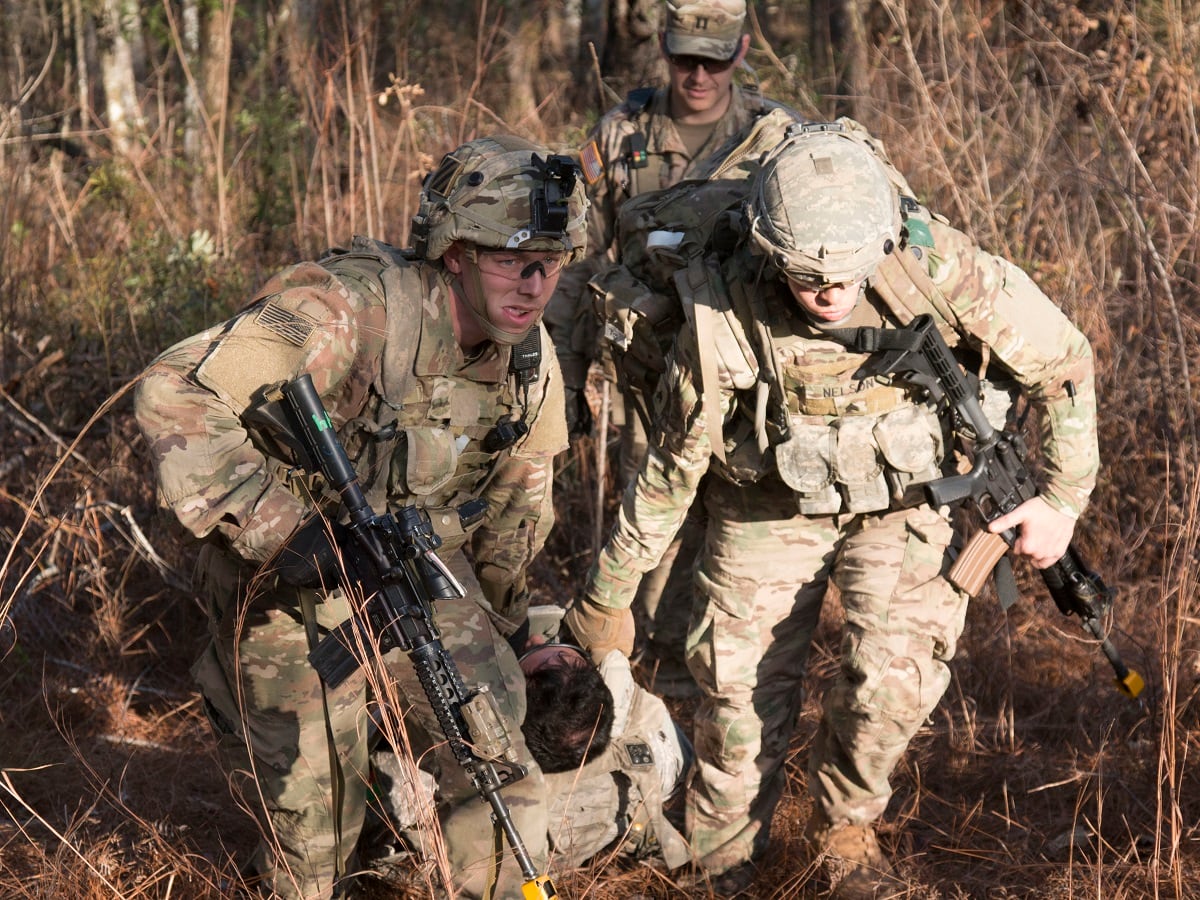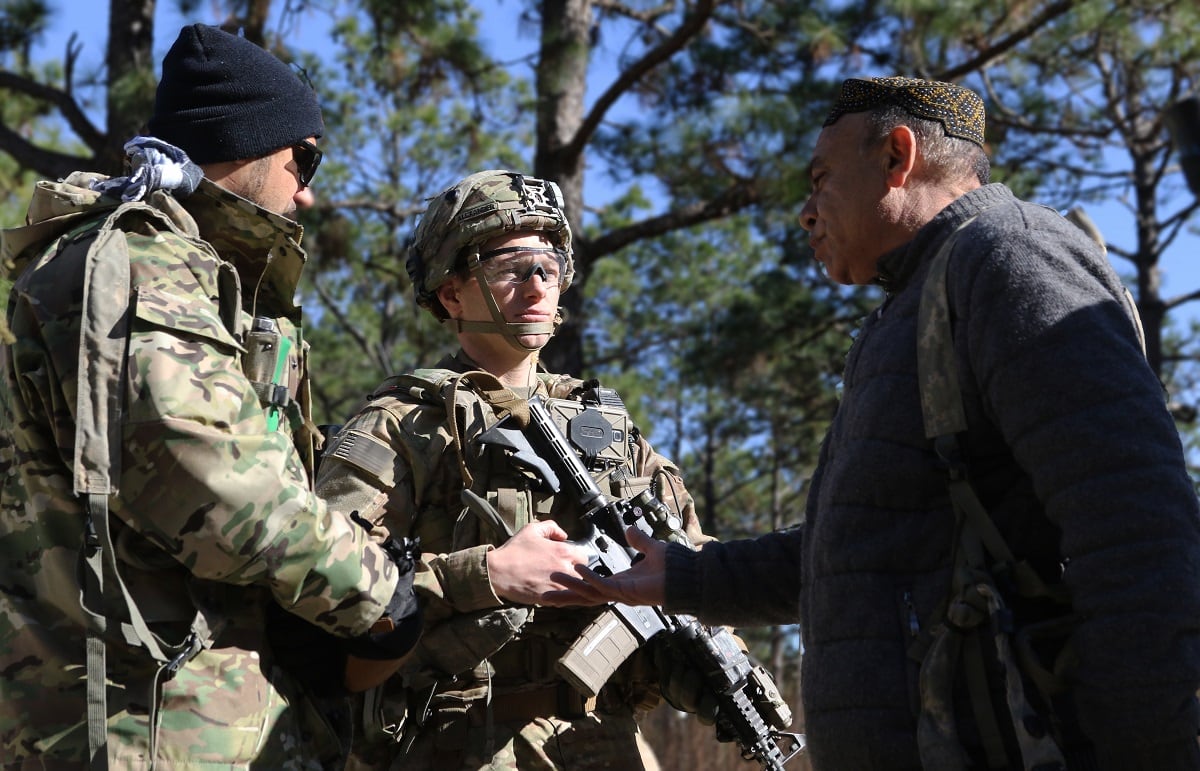FORT BELVOIR, Va. — The Rapid Equipping Force, established to meet urgent needs from soldiers using commercial off-the-shelf and government on-the-shelf options, will likely see a surge in work, according to the REF’s retiring director.
The surge will come as the Army ramps up deployments of its new adviser brigades. The first Security Force Assistance Brigade out of Fort Benning, Georgia, is now arriving in Afghanistan for its first deployment. The Army created the new brigades in its fiscal 2018 budget with a plan to stand up two that year. The FY19 budget request provides funding to establish an additional three brigades.
[NCOs without joes: What it's like to serve in the Army’s new adviser brigade]
And Col. Lanier Ward, the REF’s director, is anticipating an uptick in requests from theater from the newly forged unit designed specifically to train, advise, assist and enable foreign militaries and police forces, especially as it gets its bearings for the first time.
“I think I am going to see an increase with the SFAB organization as it arrives in and executes a little bit different mission set,” Ward told reporters during a Feb. 27 roundtable at the outfit’s headquarters on his last day on the job.
The REF has already played a small role in providing the first SFAB with a few items it needed ahead of its deployment. Ward said those items were communications gear as well as an item that assists the unit with indirect fires.
Since it’s the SFAB’s maiden voyage, it will arrive in theater with its standard equipment and operational plans, but will likely come upon problems not encountered by previous units and that may not be solved through an adjustment in tactics, techniques and procedures or through a change to the organization, according to Ward.
That is where the REF comes in, he said, to find ways to a fill a gap through materiel solutions available now, which can be rapidly fielded on a small scale.
In FY18, the majority of requirements have so far been related to intelligence warfighting functions. The majority of requests for solutions, called 10-liners, are categorized as intelligence capability, followed by protection then movement and maneuver. Fewer requests are related to sustainment and mission command, according to statistics held by the REF. The majority of requirements this fiscal year have been received from the U.S. Central Command theater.

Over time, Ward said, the REF has seen the number of requirements ebb and flow depending on operations. He noted the number has “dropped drastically” as conditions are changing in Iraq following the liberation of Mosul from Islamic State militants.
“I’m seeing requirements drop because soldiers are more [Forward Operating Base]-based to some degree,” he said. “Whereas now, with the SFAB moving to Afghanistan, I think we will see an increase in requirements from the SFABs.”
Still in demand
The REF remains busy, particularly with fielding electronic warfare capabilities, such as an EW tactical vehicle, to units in need. The organization is also assisting the Maneuver Center of Excellence at Fort Benning in efforts related to operating in subterranean environments, and providing counter-unmanned aircraft systems particularly for the dismounted soldier.
[‘No silver bullet’: Pentagon struggles to defeat drones in cat-and-mouse game]
For counter-UAS capability, the REF had to look to industry to find the right solution quickly, but Ward noted that often he can find the capability needed sitting on a shelf in a program office.
“A lot of what I do is I go [with] government on-the-shelf,” he said. “Because a product manager or a program manager in many cases have put all the hard work and effort behind something and in many cases already has the solution, but he is not ‘POM’ed’ for it for several years in the future.” POM is short for Program Objective Memorandum which refers to a five-year future funding plan.
The REF, for instance, was able to find micro tactical intelligence, surveillance and reconnaissance UAS developed by Norway’s Prox Dynamics and field them to a small unit of soldiers in need of tactical ISR.
[FLIR-owned Prox Dynamics brings night vision to tiny drone]
As a result, the REF was able to help the program manager bring the program online earlier than its scheduled fielding in 2022. The capability will now be fielded more widely among units this year.
“That is sort of a win-win for everybody,” Ward said. “What we do with a lot of items is try to pull that forward for the program managers if we can because it sort of leads into that longer-term problem set for the Army.”
Because of the REF’s unique ability to rapidly field solutions to the field in far less than two years, Ward said he doesn’t see the organization going anywhere anytime soon, even with the advent of the Rapid Capabilities Office which has a goal of providing solutions in one to five years.
[Army Rapid Capabilities Office looks to solve challenges on Korean Peninsula]
While the Army looks at how a variety of organizations may need to change — from Training and Doctrine Command to Army Materiel Command — as it stands up its Futures Command, the REF is likely to stay as it is, Ward noted.
[Fundamental changes afoot at major commands as US Army sets up modernization outfit]
“You will see the organization continue with this mission set,” Ward said. “Why? Because it works. … For a fairly low cost, the Army can get an organization that can answer to the soldier for the immediate problems they have on the ground, so whatever the Futures Command or whatever the organization becomes can worry about the Army’s bigger problems and those that are emerging.”
Jen Judson is an award-winning journalist covering land warfare for Defense News. She has also worked for Politico and Inside Defense. She holds a Master of Science degree in journalism from Boston University and a Bachelor of Arts degree from Kenyon College.





